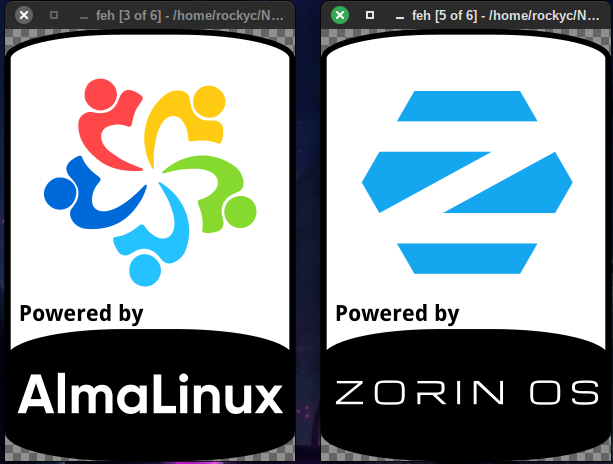- cross-posted to:
- linuxfr@jlai.lu
- linux@lemmy.ml
- linux@lemmy.ml
- cross-posted to:
- linuxfr@jlai.lu
- linux@lemmy.ml
- linux@lemmy.ml
StickerPak now includes 22 different Desktop Environments, Window Managers, and shells along with 79 Linux distributions!
StickerPack is a custom package of printable “Powered by” Linux stickers created in Inkscape. Just unhide the layer you want and export at 300dpi or print directly.



These look neat!
By the way, I’m dying to know, can I ask where you found the SVG for the FreeBSD logo?
I searched for it once but came up short, their official trademark page gave some downloads, but no SVG, instead there was an Illustrator file I believe, so… I had a friend of mine use his own Illustrator to convert it to SVG for me, haha. And yet the SVG was utterly broken so I had carefully gone over it to manually match the colors to the original again and get rid of several unnecessary (?) vector paths
It’s right on their website: https://freebsdfoundation.org/about-us/about-the-foundation/project/
Yes, that’s what I was referring to, there is no SVG file in the archive, or did I miss it somewhere?
No, you didn’t miss anything. the EPS (Encapsulated PostScript) files are also vector files. Inkscape just doesn’t like to to open them, so I had to use a program on my Mac to convert them to SVG
I believe that I used Graphic to convert them to SVG, if I remember correctly. I was a Mac user before switching to Linux, so I had already purchased the software.
Ah that explains it, lucky!
Weird they still haven’t made a clean SVG for the rest of us peasants, but at least there are good souls like you to convert them for us :)
Actually, it was Affinity Designer that I used, as I just had to convert the NetBSD logo from EPS. I’m sure that there’s a Linux app that can do it, I just haven’t looked